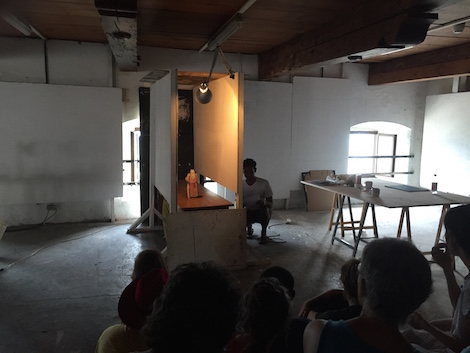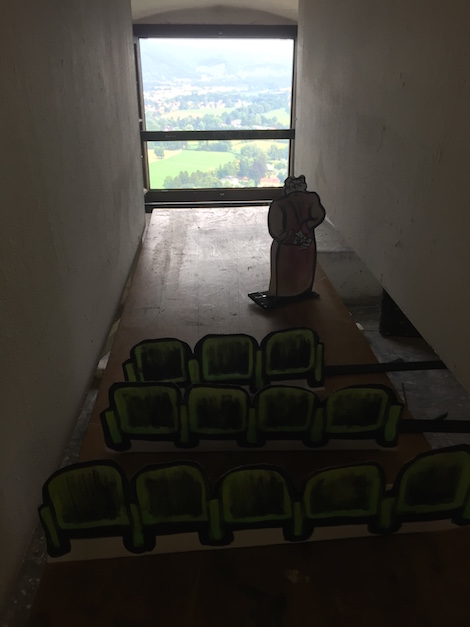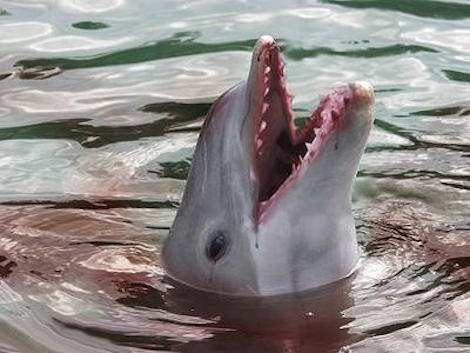| « 6 / 30 Meeting Bernhard Martin | 4 / 30 Seeing what is there » |
5 / 30 Le dernier cri
Trigger Warning. This blog post features violent dolphins and a strange metaphor. But let me tell you before what has happened today. The first classes of the academy have already come to an end. Joanna Warsza’s curating group and Ben Katchor’s visual narrative group presented their work during an open studio session this afternoon.

This is David Mathew narrating the story of his comic puppet theatre. The final task for the students of Ben Katchor’s class was to build a paper theatre and to write a story that could be performed in it. David’s piece is the story of an old man losing grip of his memories. As you can see below the stage extends to the Alps. In each scene the protagonist revisits a moment from his past. In reiterations a once coherent story falls into its single parts and creates ever more absurd memories.

Although paper theatre and shadow theatre have the reputation of being children’s entertainment, Ben Katchor’s students show that it also can be a medium for deep reflection and revelation. David and some other students form Ben Katchor’s class who live in Vienna already plan to continue to meet up and develop the format further. One of the visual narration students tells me after the performances: “This is a great tool for the development of stories. You build these little figures and then start to play around with them and in the end you have story. It is great for exploration.”
Exploration. This is my trigger word and it has been on mind for the past few days. It seems so much more suitable to describe what the students learn to practice at the summer academy than observation. I know, Mr. Kokoschka, you initially called the academy ‘Schule des Sehen’ (School of Vision). But ‘simply’ learning to see, learning to observe, seems to be insufficient. It is an active seeing, a constructive and deconstructive seeing that is encouraged during the classes: a playful attitude towards the visual space and a consistent trying to come to terms with one’s intentions.
That observation is not enough becomes even clearer when you look at what the words ‘to observe’ and ‘to explore’ literally mean. To observe comes from the Latin verb ob-servare, for servare meaning “to watch over”, but also “to keep”, “to store” and “to preserve”. In contrast, the word explore comes from the Latin verb ‘plorare’, which means ‘to cry’ and initially meant a to set up a loud hunter’s cry. Storage versus hunter’s cry. Observation versus exploration.

When you google hunter’s cry, one of the first results is an article from the year 2000 that describes how dolphins use their ultra high pitch cries to disorient prey fish. You might know that dolphins as much as bats release these cries to orient themselves. When their prey is confused by these sounds, the dolphins attack and eventually devour them. Exploration for a dolphin thus entails: to locate themselves, to confuse and finally to catch a prey. To locate, to confuse and to catch an idea. Is that the process of artistic creation?

